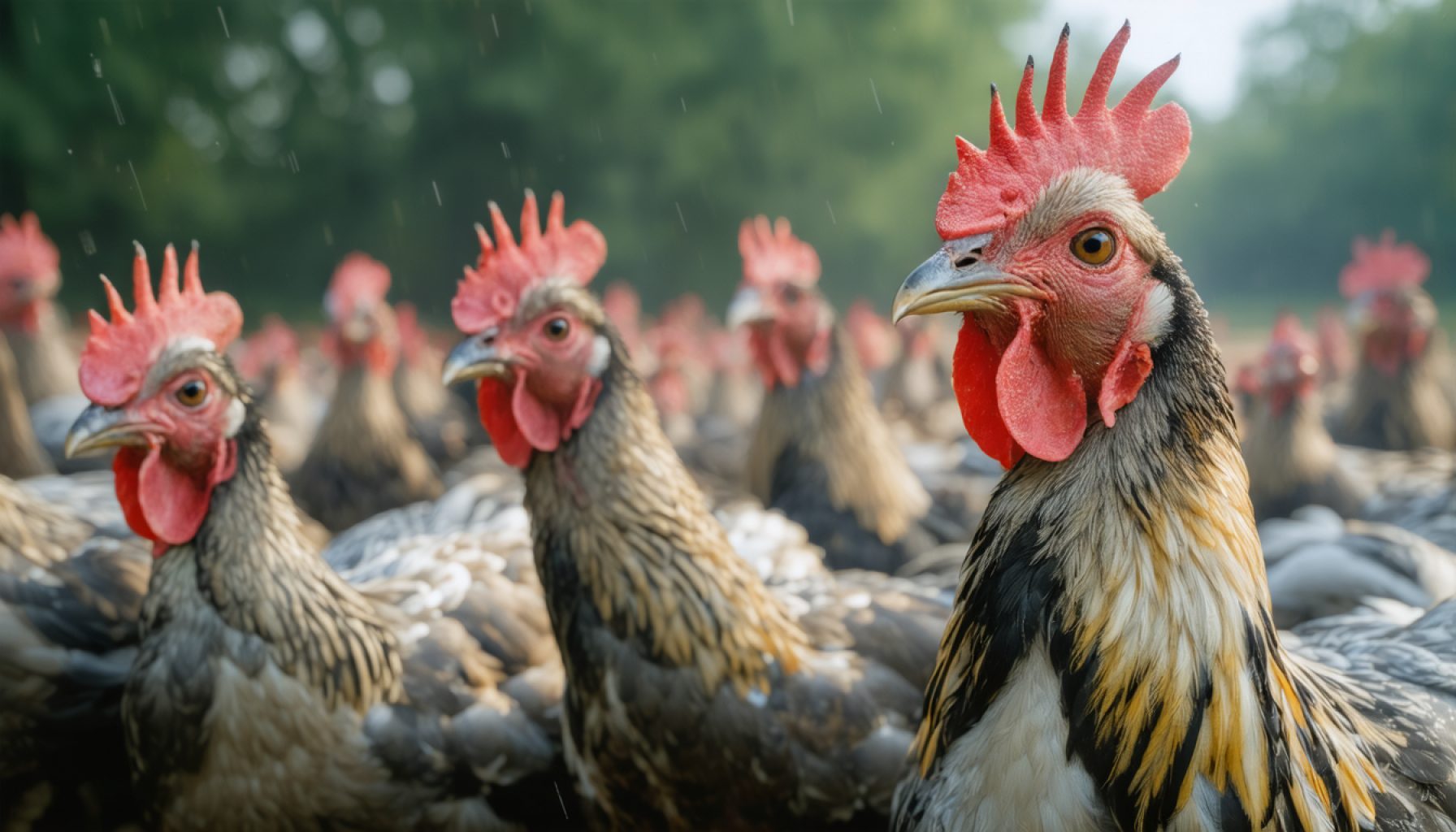- An avian flu outbreak is devastating poultry farms across rural America, requiring immediate containment measures.
- Once detected, farms initiate strict lockdowns and state and federal teams quickly move in for confirmation and response.
- Infected flocks are culled using methods such as carbon dioxide gas or firefighting foam to prevent further spread.
- Composting within barns ensures that the virus is neutralized, preventing future outbreaks.
- Farmers face significant financial and emotional impacts, with government compensation often falling short of their actual losses.
- The outbreak highlights the fragile balance between human activity and natural forces, emphasizing the resilience needed to recover and rebuild.
Across the pastoral stretches of America’s countryside, a silent storm ravages – not one of wind or rain, but a relentless avian flu. This ruthless virus sweeps through poultry farms with the swiftness of a hawk, forcing farmers into heart-wrenching decisions as they battle to contain its spread.
The landscape of control is stark and rigorous. The moment the flu is detected, farms transform into sealed fortresses, halting all movement. Within a mere day, state and federal teams swarm the premises, testing and confirming the worst. If the virus rears its ugly head, the fate of the flock is sealed. It’s a grim ritual: in smaller farms, carbon dioxide gas eases the birds into a perpetual sleep, while larger facilities employ firefighting foam or cut ventilation, leaving the rising heat and CO2 to do the inevitable.
But what becomes of the fallen, you might wonder? The earth itself becomes the custodian. Composting, a sad yet necessary process, unfolds within the barns – a mix of bird and manure brews to a virus-killing heat, ensuring that the contagion goes no further. It’s a testament to a farmer’s resolve and resilience, managing the aftermath of an outbreak without spreading the seed of future sorrow.
The toll on the farmers isn’t just measured in financial statements, though. Even as government funds offer some reprieve, the compensation often limps behind the true loss, especially for those rearing cherished breeds not meant for the usual markets.
At its heart, the avian flu outbreak is a poignant reminder of the delicate balance between humanity and nature’s capricious whims. As farmers toil to rebuild, the hope for a healthy tomorrow is their constant companion, even in the shadow of today’s silent storm.
How Farmers Can Survive and Thrive Amidst Avian Flu Outbreaks
How-To Steps & Life Hacks
Preventative Measures for Farmers:
1. Implement Biosecurity Protocols: Ensure strict control over entry points to your farms. Limit access to outsiders and enforce sanitation measures for equipment and footwear.
2. Surveillance and Monitoring: Regularly monitor flocks for signs of illness. Swiftly report any suspicious activity to veterinary authorities.
3. Vaccination Programs: Engage in discussions with health authorities about approved vaccination regimes for poultry.
Real-World Use Cases
Case Studies:
– Iowa’s Response Plan: During a past outbreak, Iowa quickly established containment zones, reducing spread through state-wide vigilance and farm-to-farm communication plans.
– Technology in Disease Tracking: Recent implementations of drone technology help with remote monitoring of flock health, minimizing human interaction.
Market Forecasts & Industry Trends
Future Trends:
– Increased Demand for Organic Poultry: Consumers are veering towards organically reared poultry amidst health scares, as documented by the USDA.
– Rise in Smart Farming: Automation and the use of AI in monitoring flock health are expected to grow, per research outlined by McKinsey & Company.
Reviews & Comparisons
Comparative Analysis:
– Disinfection Tools: Look into various FDA-approved sanitizers and choose the most cost-effective yet efficient ones. Compare their efficacy in field studies, available in journals like the Journal of Applied Poultry Research.
Controversies & Limitations
Debates and Challenges:
– Ethical Concerns: Methods used in humane culling have sparked debates. Organizations like PETA argue for more humane alternatives, despite the economic impact.
– Compensation Gaps: Farmers often find federal compensations insufficient for rare poultry breeds, leading to calls for reform.
Features, Specs & Pricing
Poultry Culling Equipment:
– CO2 Chambers: Costs vary but ensure they meet the humane standards set by the AVMA. Specifications include size, material sturdiness, and efficiency.
Security & Sustainability
Sustainable Practices:
– Composting Efficiency: Follow sustainability modifiers to ensure minimal environmental impact, utilizing materials that enhance the aerobic composting process.
Insights & Predictions
Expert Opinions:
– Veterinary Experts predict that with climate change, mutation risks increase, calling for continuous updates of detection technologies.
– FAO Insights: Expect international regulation updates ensuring cross-border disease prevention strategies.
Tutorials & Compatibility
Tutorials:
– Explore comprehensive online courses on biosecurity management for farms available through extensions from agricultural universities.
Pros & Cons Overview
Advantages:
– Biosecurity Protocols mitigate disease spread efficiently if enforced pre-emptively.
Disadvantages:
– Economic Loss: Despite preventive measures, unexpected outbreaks lead to significant financial and emotional distress for farmers.
Actionable Recommendations
– Invest in Technology: Leverage farm-focused software for tracking and alerting systems. Consider subsidies for startups offering solutions in this niche.
– Engage with Local Agricultural Extensions: They provide the latest training and resources directly applicable to local conditions.
Quick Tips
– Stay Informed: Regularly consult with veterinarians and official animal health bodies for the latest in avian disease management techniques.
– Build Community Networks: Collaborate with local farmers and share early signs of potential outbreaks to create a community-first response strategy.
For more information on biosecurity measures and innovations in poultry farming, visit USDA.
Farmers can safeguard their flocks and livelihoods by adopting preventative measures and adapting to industry innovations that provide newer, economical, and more humane practices in poultry management.
